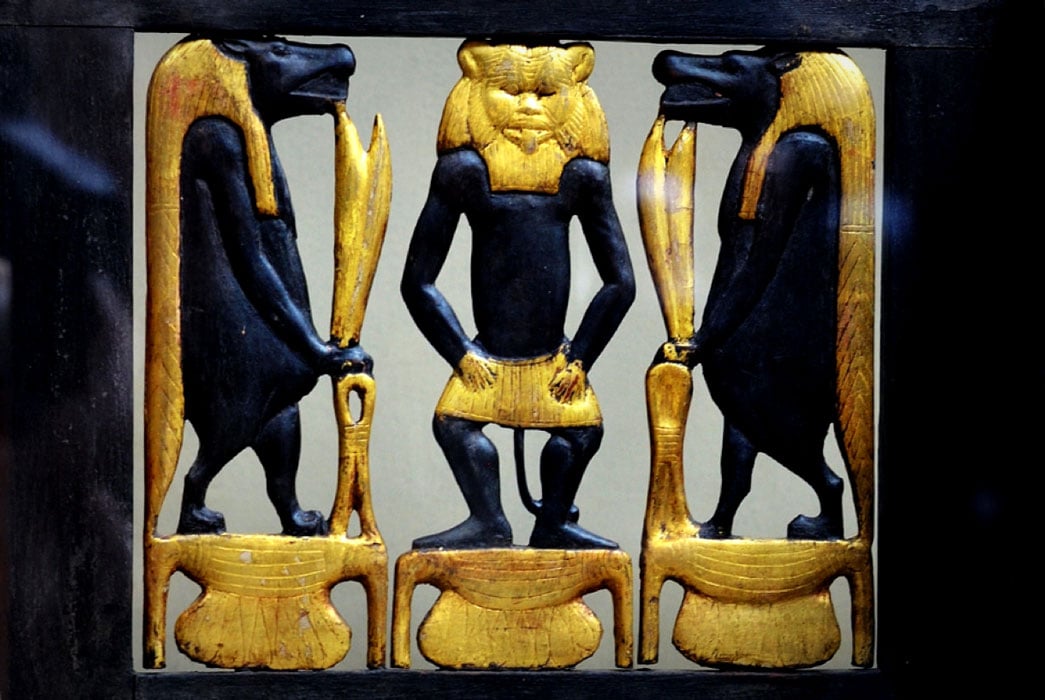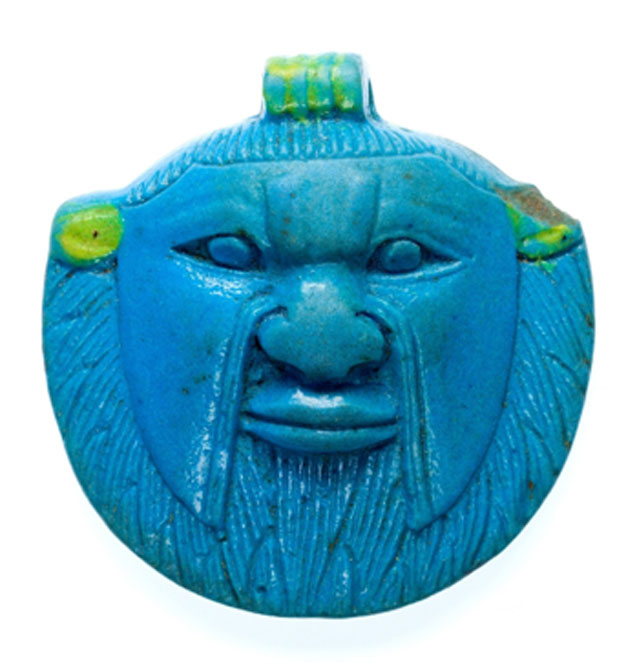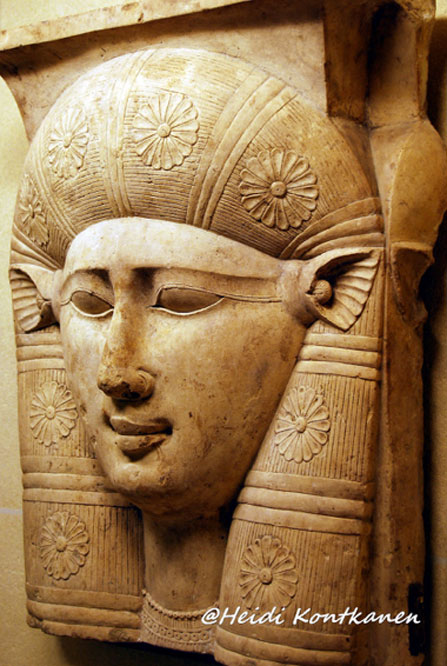
Bes, The Protector Deity: His Role and Significance as Defender of the Good – Part I
Few ancient cultures rivaled the Egyptian pantheon of gods and goddesses. Virtually every known creature was represented and venerated as they were believed to possess magical qualities of different kinds. Bes was one of the most popular deities among the multitude of supernatural beings. A lion-dwarf, he is usually depicted wearing strange outfits; playing a tambourine, harp or holding the hieroglyphic Sa sign signifying protection. This strange character was a firm favorite among women and children - for he was their protector against all manner of evil.

Faience amulet of the head of Bes from the Late Period, 26th to 30th Dynasties. Bes was worshipped and invoked by ordinary Egyptians as a protector. His usual depiction, as a grotesque dwarf with a lion’s ears and mane, was thought to deter the approach of the malevolent forces believed to cause illness. Metropolitan Museum of Art, New York.
Origins of a Playful God
The ancient Egyptians fervently believed that magic was a sustainer of life, in that, it provided an escape route; or better still, a comforting answer when beset by calamity. While a religious approach to a woman who’d lost her child could be ‘no one can fight destiny’ – magic gave answers or the means to understand why a negative situation occurred and how to overcome or make peace with it.
This probably explains the rise of various divinities who were appeased depending on the problem one wished to solve. The qualities attributed to the bearded Bes (also Besa and Bisu – meaning ‘to protect’) were wide-ranging; and it is not possible to compartmentalize this god into a single role. While he was not entertaining mothers and their offspring in his jovial avatar; Bes wielded an array of weapons to either battle or keep evil at bay. All classes of Egyptian society sought his divine favors.

This exquisite figurine of the protector-deity Bes is made of Bronze with gold inlays. Bes was particularly popular among women and children. Third Intermediate Period. Los Angeles County Museum of Art.
In the early years of Egyptology, it was generally believed that Bes emerged as a god only during the Middle Kingdom period, but later studies indicated that the cult of the dwarf deity existed at the dawn of the Old Kingdom. Even though Bes finds mention in pre-dynastic times; his cult per se burgeoned only at the start of the New Kingdom. Egyptological researchers hold varied opinions about the origins of Bes. Some consider him to have been an import from the ‘Divine Land’ specifically called the ‘Lord of Punt’ (probably modern-day Somalia). This led to associating him with the immensely popular goddess, Hathor, goddess of music known as the ‘Lady of Punt’.

A fragment of a capital from a column depicts the face of the goddess Hathor, with cow ears. 3rd century BC, Ptolemaic. Louvre Museum, Paris.




